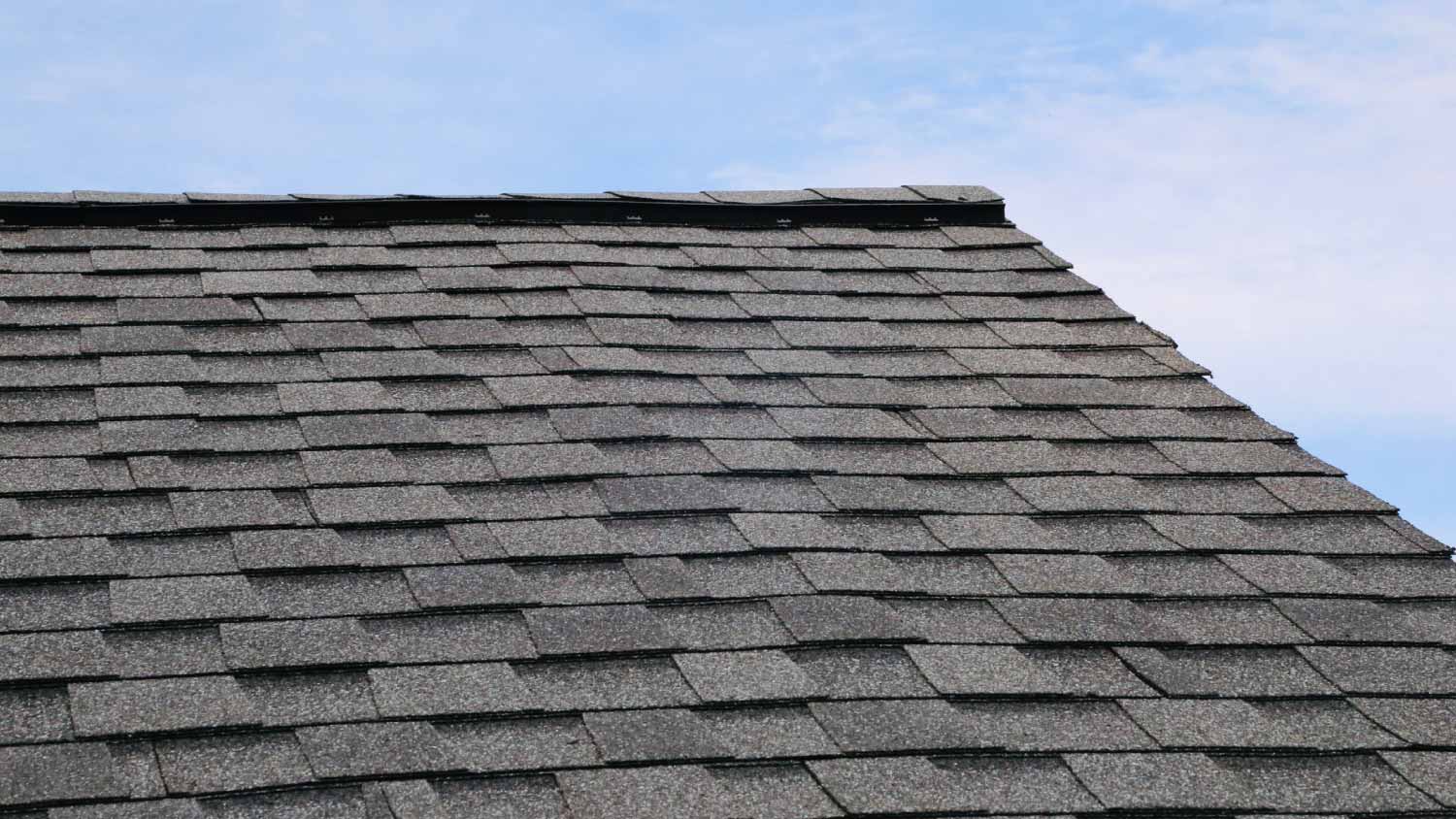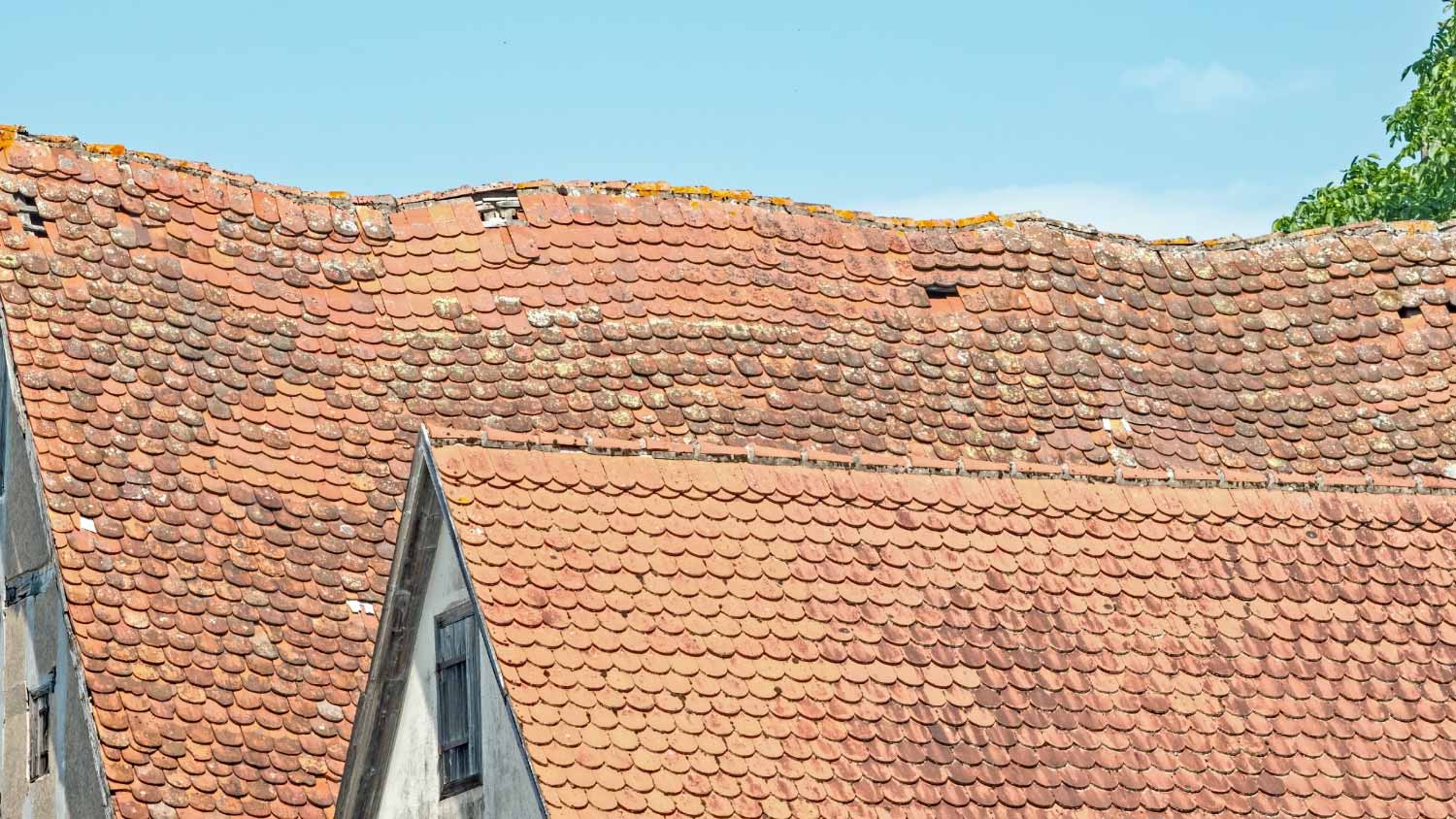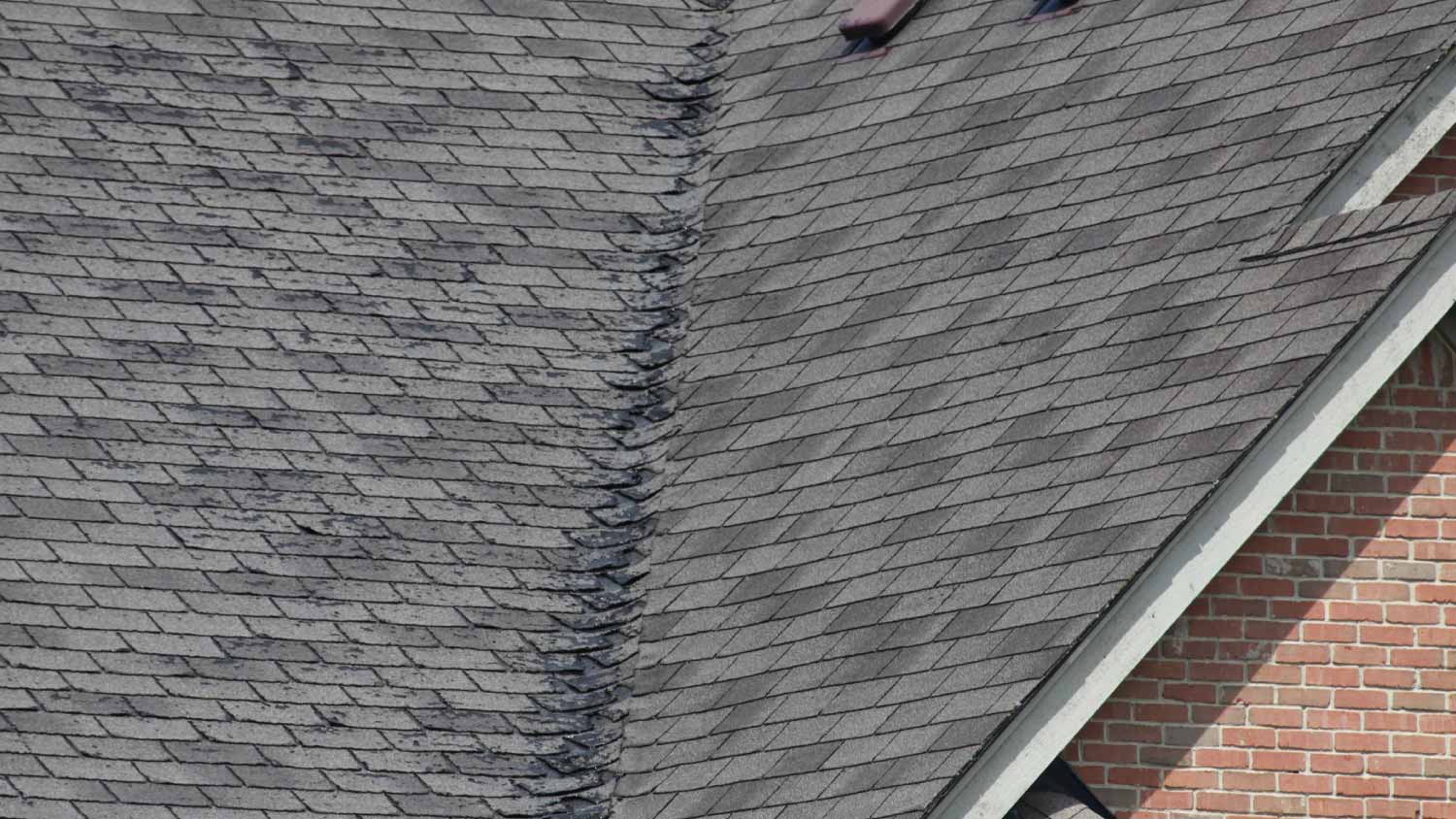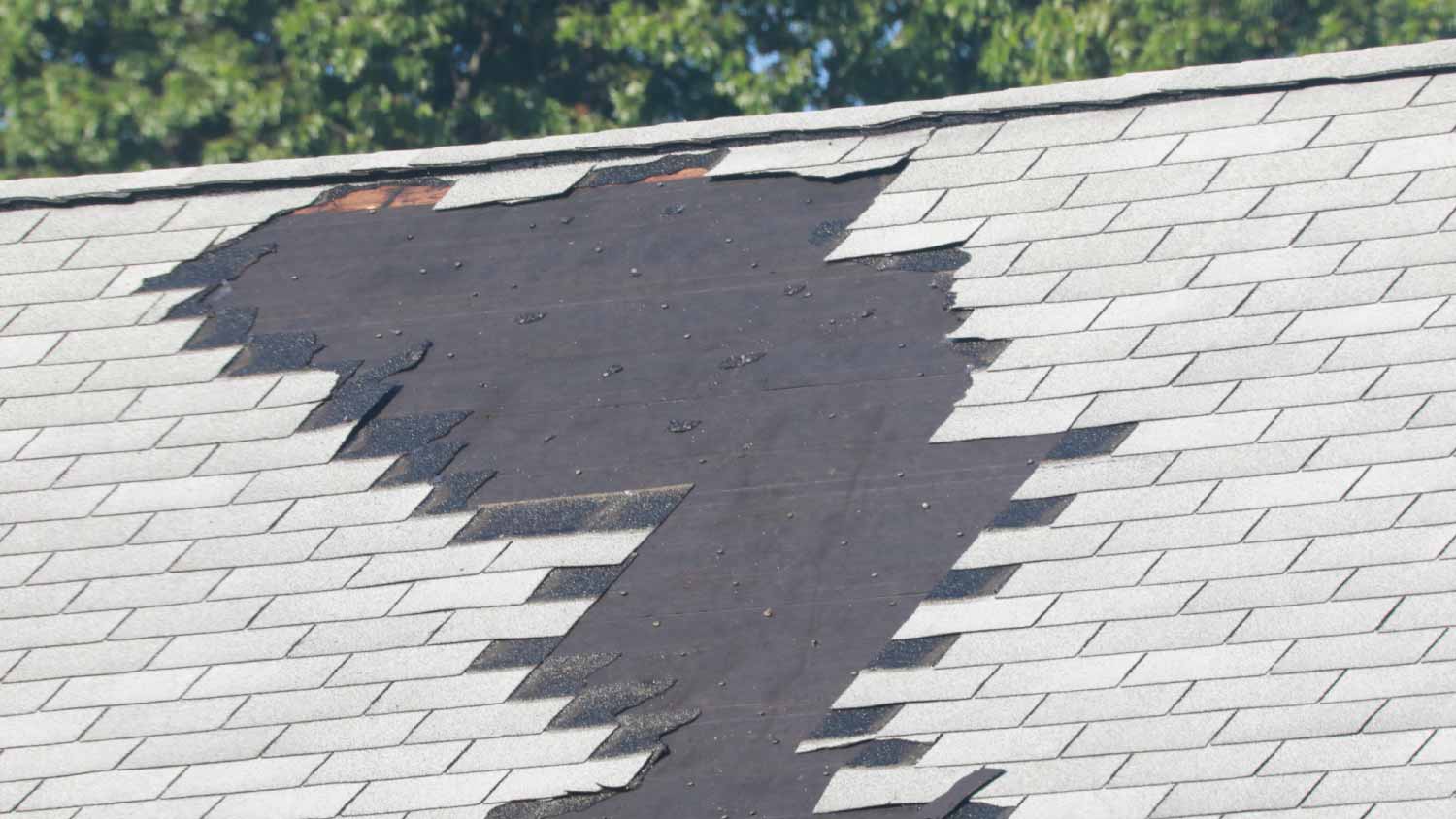
Knowing your home's roof underlayment replacement cost can help estimate the cost of roof replacement. Learn about the factors that affect prices.
Don’t risk your safety with a roofing job gone awry


Inconsistencies in your roof’s appearance can indicate a bad roofing job.
Look for missing or mismatched shingles and other roofing components.
Call a roofing repair pro if your roof shows signs of damage.
Replacing your roof is a major investment, so you want to be sure the job is done right. Unfortunately, some homeowners fall victim to bad roofing jobs, leading to leaks, structural damage, and compromised safety. Knowing what to look for to identify a bad roofing job can help you protect your home and your investment in your new roof. Learn these common signs of a bad roofing job to prevent expensive and dangerous problems down the road.
Recognizing early warning signs is important, but figuring out the right fix isn't always simple. Delaying professional help or attempting complex DIY repairs can lead to further damage and increased costs. With our network of local pros, you can hire a skilled professional to assess the issue and recommend the best solution.
Your roof protects your home and everyone in it from the elements. A bad roofing job can expose your home to water damage, allow mold growth, and compromise the structural integrity of your home, making it unsafe for you and your family. Poor roof work can lead to a collapsed roof, damaged support structures, and even foundation problems—all of which can be costly to fix.

A new roof should look uniform on every surface and from every angle. Visually inspect your roof from multiple angles to ensure it has a consistent appearance all the way around. Some things to look for include:
Dips, curves, or waves in the roofline
Sections that are different colors or textures than the rest of the roof
Shingles laid in a different pattern than the surrounding areas
Roof leaks are among the most common reasons to replace a roof, so if your roof is still leaking after its replacement, something’s gone wrong. Roof leaks in a new roof can be caused by improper nailing techniques, damaged roof sheathing (the layer of material the shingles are nailed to), gaps in shingle coverage, and more. A new roof should not leak even in heavy rain, so if you have water leaking through your new roof, you need to address it immediately before the problem gets worse.
The most commonly sought-after asphalt shingle roof repair involves fixing water leaks. Homeowners also want recommendations from a roofer for repairs that prevent damage and keep their roofs in good condition. Other issues include broken, missing, cracked, and loose shingles, water stains, and other related problems.

A sagging or leaning roofline is a telltale sign of a bad roofing job. A new roof should have a straight, level roofline. Sagging can indicate several potential problems, including rotted sheathing or improper framing. A sagging roof will only worsen over time, so bring in a roofing professional to identify and fix the problem as early as possible.
If you see a section of shingles or individual shingles that don’t match the rest of the roof, this may indicate that the roofer ran out of your roofing material and substituted in something else. Aside from the aesthetic problems, the mismatched shingles may be used, damaged, or left over from another roof and may not perform like the shingles you chose. Double-check that the shingles on your roof are what you picked out and paid for.

In order to cut costs, a roofer may skip some critical but less visually obvious components, leaving your roof installed improperly. Verify that your roof has these necessary materials:
Drip edge: A drip edge is a metal material that prevents water from getting behind your gutters and fascia board.
Underlayment: Underlayment is sheeting made of felt or synthetic material installed under the shingles for added protection from the elements.
Flashing is a thin metal layer that keeps water out of your home, especially around joints, angles, and features like chimneys or vents. Your roofer should install new flashing with your roof replacement—reusing old flashing can lead to leaks through old nail holes or rusted spots. In many areas, new flashing is a building code requirement, but even if it’s not necessary to meet code, it should still be replaced.

If your roof is missing shingles, it’s an obvious and easy-to-spot sign of a bad roofing job. A new roof should not have any gaps in shingle coverage, so a missing shingle can indicate that your roofer cut corners. If there are obvious signs like missing shingles, your roofer may have skipped other necessary steps you can’t easily see.
Ensure the job is done right by hiring the right pro for the job. Choose a roofer with extensive experience and good reviews or word-of-mouth recommendations, and meet with several potential roofers before making your final decision. Compare more than just the price quotes—this is your opportunity to learn more about who you’ll be entrusting this important and pricey project to.
Homeowners should look for a lifetime warranty that comes standard with the roofing product and be sure to read the fine print to learn specifically what the warranty covers.
Questions to ask when hiring a roofer include inquiries about their licensing, insurance, workers, project process, and more. The more details you find out, the more confident you can be in your decision. For added peace of mind, you can hire a roof inspector after the job is complete to verify the work was done correctly.
Roof replacement is a job best handled by the pros unless you have extensive roofing experience and are familiar with your local building codes. Not only is it a complex project, but it’s also a dangerous one. Climbing up to your roof and walking around on it doing work can result in serious injury.
If any roof installation steps aren’t done right or any components are missing, whatever money you may have saved by DIYing it will go right to a local roof repair company. You’ll need to cover the often extremely high cost of roof repair to ensure your roof is safe and up to code. Skip the potential hassle and safety risks—hire a pro to tackle this job.
From average costs to expert advice, get all the answers you need to get your job done.

Knowing your home's roof underlayment replacement cost can help estimate the cost of roof replacement. Learn about the factors that affect prices.

Learn all of the factors you need to consider to estimate roof ridge cap replacement costs, whether it’s safe and worthwhile to DIY the work, and more.

Discover common roof framing cost factors, including the differences between rafter and truss designs, to estimate the cost of your new roof.

Understanding the available types of roof trusses helps you create the desired shape and support for your roof. Learn more about the different options.

Courteous homeowners may wonder what the etiquette is when it comes to tipping roofers. Find out if, when, and how you should tip roofers for a job well done.

Need a new roof but aren’t keen on it looking like everyone else’s? These alternative roofing materials offer a unique curb appeal, sustainability, and more.